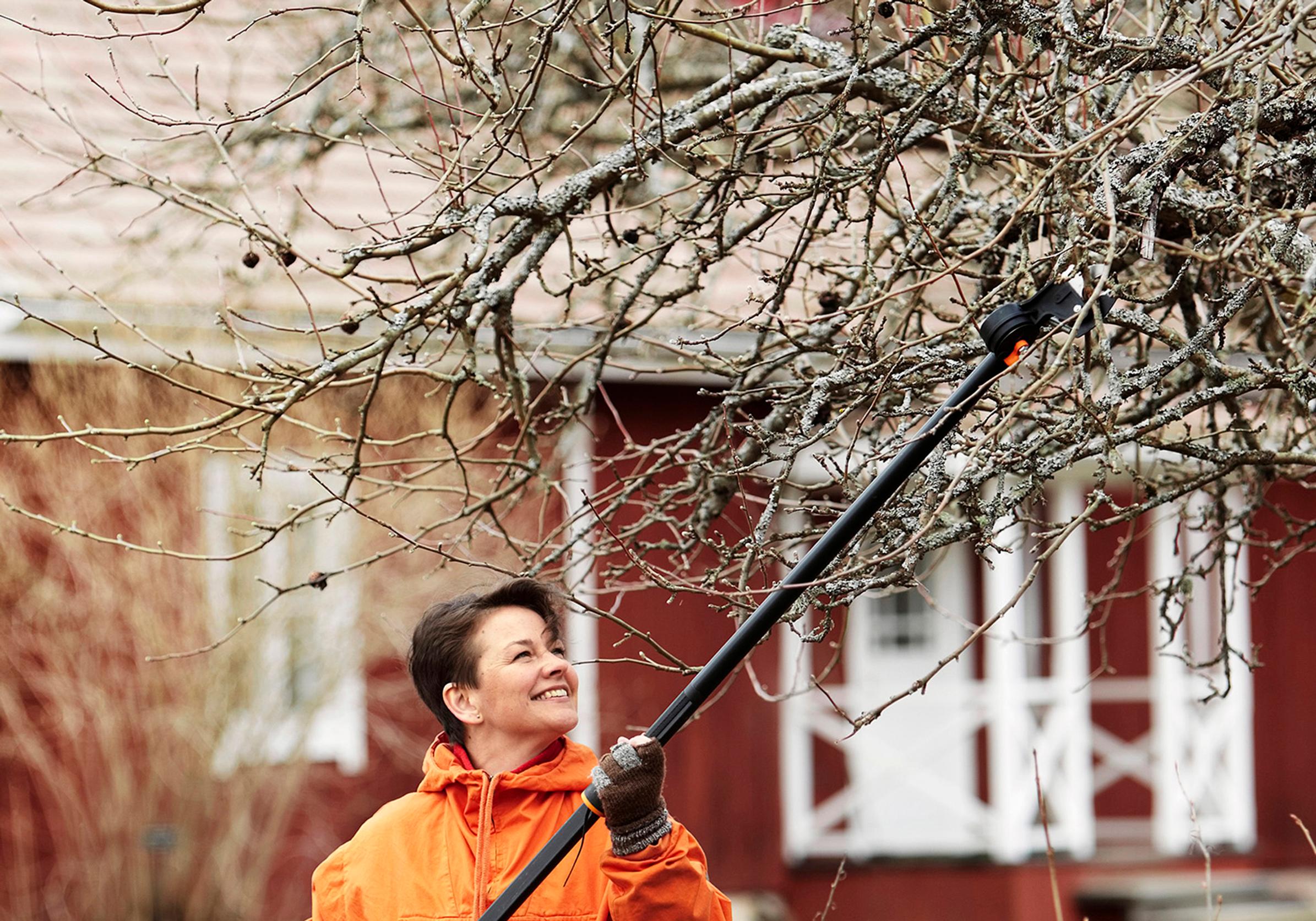
How to prune an apple tree—see clear instructions
Pruning an apple tree is easy when you follow a few basic principles. Prune young apple trees as little as possible. With older trees, you can generously remove dead and crossing branches. Be cautious not to prune too heavily, as this can cause the tree to produce water sprouts that, when broken, can cause significant wounds to the tree.
Regularly pruning your apple tree is worthwhile because a properly pruned tree yields a better harvest. Ornamental apple trees require less maintenance, as they are typically pruned only when young. The goal with pruning an apple tree is to create an airy structure with sturdy branches. An airy tree receives plenty of light, promoting the formation of flower buds.
If your goal isn’t a large harvest, you can be less diligent with pruning your apple tree. However, annually remove branches that rub against each other, grow inward or straight upward, as well as those that are growing too densely. Also, cut off hanging branches that make it hard to move around the tree, as well as water sprouts growing at the base of the tree. Remove damaged and dead branches as soon as they appear. It is not necessary to treat pruning wounds with wound sealant.
A newly planted apple tree roots best if it’s not pruned immediately at planting but about a year later. By then, the tree has had time to root well enough to produce normal-sized leaves and shoots.
When to prune an apple tree
The appropriate time to prune an apple tree is in early spring before growth starts, during March–April, or in mid-summer from mid-July to mid-August. The more heavily you prune an apple tree, the more it grows, and the longer it takes to bear fruit. However, summer pruning does not cause as much additional growth as spring pruning.
Apple tree branches also require bending. A branch bent horizontally receives light along its entire length, stops elongating, and starts forming flower buds.
Thinning apple tree fruitlets
An apple tree’s harvest varies annually. Often, the tree bears fruit only every other year or less frequently. You can influence the next year’s harvest by thinning the fruitlets. As a result, the tree is better able to form new flower buds. You’ll also benefit from thinning the fruitlets—the ripening apples will be larger and of better quality.
How to prune a young apple tree
- Cut off branches growing below half a meter from the base of the tree. These branches are in the shade of the canopy and won’t produce apples.
- If several branches grow from the same spot on the trunk, remove one of them.
- Leave at least 15 centimeters of space between branches.
- Spread out branch removals over a few years to avoid creating too many fresh wounds close together on the trunk.
- Shorten overly long branches at a suitable branch fork or at a downward-growing bud.

- Branches will fork near the pruning point, so decide before cutting where you want the new fork to form.
- Remove weak-growing branches entirely or shorten them, which will help them strengthen over time.


How to prune an old apple tree
An apple tree that has reached fruit-bearing age grows moderately. It’s sufficient to monitor its branches and tidy them as needed. Favor removing small branches over large ones, and start with the weakest. It’s best to remove branches while they’re still thin; the tree can heal the wounds quickly, especially if the wood is allowed to dry undisturbed—fungal spores that cause decay do not thrive in dry wood. Dead branches can be removed at any time.
Lower the crown of a tree that’s too tall, but remove at most a quarter at a time. Pruning too heavily causes the tree to produce excessive shoots, which can be detrimental. It can be difficult to prune branches from the crown of an old tree in the middle of summer, as the branches to be removed can easily tear off healthy branches, fruit spurs, and leaves along with them. Keep in mind that you cannot restore a tree in poor condition to good health by pruning.



Thinning water sprouts and spur pruning
A damaged or excessively pruned tree may produce lots of new shoots. If the shoots grow rapidly and develop large leaves, they are water sprouts. The tree may look healthy, but in reality, water sprouts are a distress signal. They grow as a result of damage or severe pruning and quickly provide the tree with additional energy to replace what was lost.
Water sprouts grow from dormant buds beneath the bark and are not as firmly attached to the trunk as regular branches. If a sprout becomes heavy, it may tear off, causing a large wound and additional problems for the tree. Unfortunately, a tree that produces lots of water sprouts cannot be restored to its original shape, so it’s wise to use the saw sparingly. A tree that produces root suckers also indicates a problem.



If young, thin shoots are located in a sunny spot, you can spur prune them in spring. This helps the tree produce flower buds. Shorten the shoot just above the third bud. The following spring, remove the outermost shoot and shorten the lowest shoot above the third bud. Perform spur pruning every spring. After five years, the fruit spur’s productivity may decrease, and it can be removed or shortened. Spur pruning can also be done on mature apple trees.
Expert: Horticulturist and arborist Lotta Lindholm


